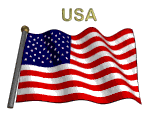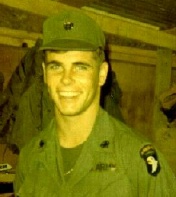
Vietnam War Myths

Many untruths and myths surfaced during the Vietnam War. Listed
below are theactual myth and the real truth behind each statement of myth.
Myth:
The average age of an infantryman fighting in Vietnam was
19.
FACT:
Assuming KIAs accurately represented age groups serving in
Vietnam, the average age of an infantryman serving in Vietnam to be 19 years old is a myth, it is actually 22.8.
None of the enlisted grades had an average age of less than 20. The average man who fought in World War II was
26 years of age.
Myth:
The fighting in Vietnam was not as intense as in World War II.
FACT:
The average infantryman in the South Pacific during World War II
saw about 40 days of combat in four years. The average infantryman in Vietnam saw about 240 days of combat in
one year thanks to the mobility of the helicopter.One out of every 10 Americans who served in Vietnam was a
casualty. 58,169 were killed and 304,000 wounded out of 2.59 million who served. Although the percent who died
is similar to other wars, amputations or crippling wounds were 300 percent higher than in World War II. 75,000
Vietnam veterans are severely disabled. MEDEVAC helicopters flew nearly 500,000 missions. Over 900,000 patients
were airlifted (nearly half were American). The average time lapse between wounding to hospitalization was less
than one hour. As a result, less than one percent of all Americans wounded who survived the first 24 hours died.
The helicopter provided unprecedented mobility. Without the helicopter it would have taken three times as many
troops to secure the 800 mile border with Cambodia and Laos (the politicians thought the Geneva Conventions of
1954 and the Geneva Accords or 1962 would secure the border) The 1990 unsuccessful movie "Air America" helped to
establish the myth of a connection between Air America, the CIA, and the Laotian drug trade. The movie and a
book the movie was based on contend that the CIA condoned a drug trade conducted by a Laotian client; both agree
that Air America provided the essential transportation for the trade; and both view the pilots with sympathetic
understanding. American-owned airlines never knowingly transported opium in or out of Laos, nor did their
American pilots ever profit from its transport. Yet undoubtedly every plane in Laos carried opium at some time,
unknown to the pilot and his superiors.
Myth:
Most Vietnam veterans were drafted.
FACT:
2/3 of the men who served in Vietnam were volunteers. 2/3 of the
men who served in World War II were drafted. Approximately 70% of those killed were volunteers.
Myth:
The media have reported that suicides among Vietnam veterans range from 50,000 to
100,000 - 6 to 11 times the non-Vietnam veteran population.
FACT:
Mortality studies show that 9,000 is a better estimate. "The CDC Vietnam Experience
Study Mortality Assessment showed that during the first 5 years after discharge, deaths from suicide were 1.7 times
more likely among Vietnam veterans than non-Vietnam veterans. After that initial post-service period, Vietnam
veterans were no more likely to die from suicide than non-Vietnam veterans. In fact, after the 5-year post-service
period, the rate of suicides is less in the Vietnam veterans' group."
Myth:
A disproportionate number of blacks were killed in the Vietnam War.
FACT:
86% of the men who died in Vietnam were Caucasians, 12.5% were black, 1.2% were other
races.
Sociologists Charles C. Moskos and John Sibley Butler, in their recently published
book "All That We Can Be," said they analyzed the claim that blacks were used like cannon fodder during Vietnam
"and can report definitely that this charge is untrue. Black fatalities amounted to 12 percent of all Americans
killed in Southeast Asia - a figure proportional to the number of blacks in the U.S. population at the time and
slightly lower than the proportion of blacks in the Army at the close of the war."
Myth:
The United States lost the war in Vietnam.
FACT:
The American military was not defeated in Vietnam. The American
military did not lose a battle of any consequence. From a military standpoint, it was almost an unprecedented
performance. (Westmoreland quoting Douglas Pike, a professor at the University of California, Berkley a renowned
expert on the Vietnam War) [Westmoreland] This included Tet 68, which was a major military defeat for the VC and
NVA.
Myth:
Kim Phuc, the little nine year old Vietnamese girl running naked
from the napalm strike near Trang Bang on 8 June 1972, was burned by Americans bombing Trang Bang.
FACT:
No American had involvement in this incident near Trang Bang that burned Phan Thi Kim
Phuc. The planes doing the bombing near the village were VNAF (Vietnam Air Force) and were being flown by
Vietnamese pilots in support of South Vietnamese troops on the ground. The Vietnamese pilot who dropped the napalm
in error is currently living in the United States. Even the AP photographer, Nick Ut, who took the picture was
Vietnamese. The incident in the photo took place on the second day of a three day battle between the North
Vietnamese Army (NVA) who occupied the village of Trang Bang and the ARVN (Army of the Republic of Vietnam) who
were trying to force the NVA out of the village. Recent reports in the news media that an American commander
ordered the air strike that burned Kim Phuc are incorrect. There were no Americans involved in any capacity. "We
(Americans) had nothing to do with controlling VNAF," according to Lieutenant General (Ret) James F. Hollingsworth,
the Commanding General of TRAC at that time. Also, it has been incorrectly reported that two of Kim Phuc's brothers
were killed in this incident. They were Kim's cousins not her brothers.
Go to TET
Offensive Serving in
Vietnam Vietnam
War Photos
| 






